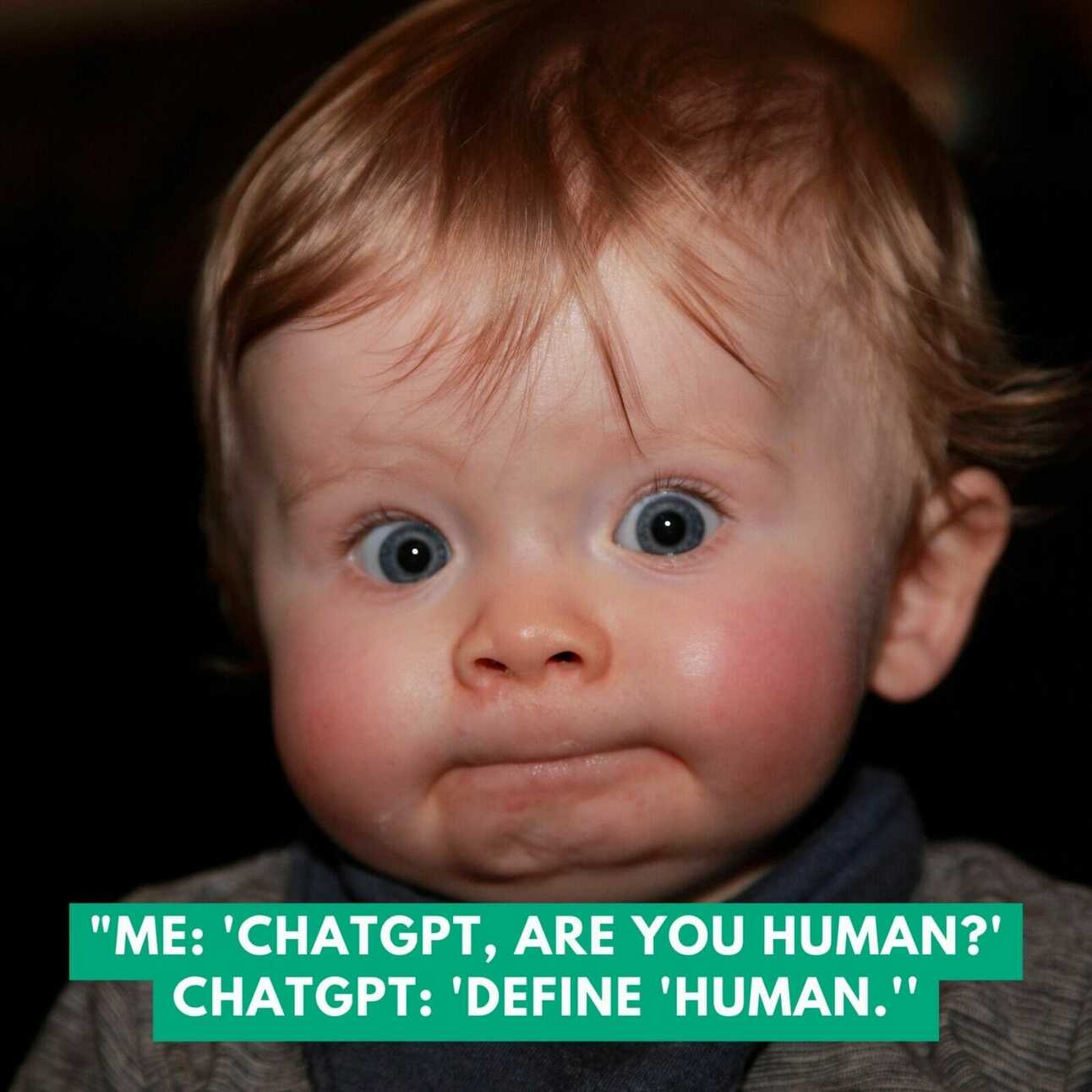Reading time: 5 minutes
Greetings from above,
It's the God of Prompt here - ready to help you craft copy that flows smoother than a dependency graph!
I used to struggle with writing copy that truly connected with readers.
My sentences felt like a grammar teacher had sexual intercourse with ChatGPT - and they gave birth to a robot writer..
But today I learned how to harness even ChatGPT to write like a human.

Today, we'll talk about:
What dependency grammar is
How it can improve your AI-generated copy
A powerful prompt to put it into action
Let's dive in!
Want to get the most out of ChatGPT?
Revolutionize your workday with the power of ChatGPT! Dive into HubSpot’s guide to discover how AI can elevate your productivity and creativity. Learn to automate tasks, enhance decision-making, and foster innovation, all through the capabilities of ChatGPT.
Ever feel like your AI-generated copy misses the mark?
The sentences might be grammatically correct, but they just don't flow naturally.
That's where dependency grammar comes in - a linguistic framework that focuses on connecting words based on their relationships.
I actually discovered it in the recent episode of the Lex Fridman show with Edward Gibson, where he shared insights on language, grammar and syntax.
What stood out to me most is the Dependency Grammar Framework.
By leveraging the framework in your prompts, you can guide any AI to craft copy that's easier to read and comprehend.
HOW DEPENDENCY GRAMMAR CAN HELP YOUR COPY:
Creates more natural-sounding sentences
Improves readability and comprehension
Enhances the persuasive impact of your copy
🧩 THE DEPENDENCY GRAMMAR FRAMEWORK 🧩
Dependency grammar analyzes how words in a sentence depend on each other to convey meaning.
By prioritizing these connections in your prompts, you can steer AI to generate copy that flows logically from one idea to the next.
How the Dependency Grammar Framework helps:
Identifies the core elements of a sentence
Connects related words and phrases
Ensures a clear, logical flow of ideas
Here's the Dependency Grammar Framework:
Identify the main verb or action
Connect the subject to the verb
Link modifiers to the words they describe
Ensure a clear relationship between clauses
Maintain a logical flow from one idea to the next
Ready to put this framework into action with a powerful AI prompt? Keep reading to discover the mega-prompt that will transform your copy!
The Dependency Grammar Prompt takes the guesswork out of crafting compelling, easy-to-read copy.
By instructing the AI to prioritize word connections, it generates content that flows naturally and persuasively.
⚙️ HERE’S THE DEPENENCY GRAMMAR PROMPT ⚙️
Use the dependency grammar linguistic framework rather than phrase structure grammar to craft a [ARTICLE/POST/EMAIL/ETC.].
The idea is that the closer together each pair of words you’re connecting are, the easier the copy will be to comprehend.
Here is the topic and additional details: [DETAILS]❓ HOW TO USE THE PROMPT ❓
STEP 1: Replace [ARTICLE/POST/EMAIL/ETC.] with the type of copy you're writing
STEP 2: Fill in the [DETAILS] section with your topic and any additional information
STEP 3: For best results, keep your [DETAILS] section concise and to the point
EXTRA TIP: USE IT AS AN ELEMENT IN YOUR PROMPTS
Copy and paste the prompt below to add it to any of your existing prompts, to ensure that the output is 100% human written without compromising your other instructions:
Use the dependency grammar linguistic framework rather than phrase structure grammar for the output. The idea is that the closer together each pair of words you’re connecting are, the easier the copy will be to comprehend.📤 EXAMPLE OUTPUT 📤

So here’s a good example of how dependency grammar affected the generated text.
When reading, there was not so much “robotic” ChatGPT-written feeling that I had before using this element in my prompts.
However, it’s still a very basic output because I haven't spent enough time on crafting the perfect mega-prompt for ChatGPT - I didn’t specify constraints, response guidelines, rules and so on.. so it’s still just for example purposes.

This prompt was written WITHOUT the dependency framework element in it.
Immediately, I can tell this was written by ChatGPT. How?
Look at “In today’s rapidly advancing technological landscape” phrase that begins the article - 80% of readers will immediately lose their interest in this article.
Furthermore, the rest of the content is rather dry, feeling like it uses too much “watery” language - meaning it creates words that do not necessarily bear any valuable meaning to move the article forward.
All in all, the dependency framework is not the cure-for-all solution, but it does for sure have an impact on the output and how it’s structure in terms of phrasing, syntax and grammar.
That’s why you should still use advanced prompting techniques I shared before, only adding the dependency framework as an ELEMENT rather than creating the entire prompt around it.
DEPENDENCY GRAMMAR + PROMPTING SUMMARY
Dependency grammar helps you write clearer, more engaging copy
AI prompting automates the process and saves you time
Combining the two is a recipe for copywriting success
📚 FREE RESOURCES 📚
📦 WRAP UP 📦
What you learned today:
Dependency grammar focuses on word relationships for clearer copy
AI prompting can automate the dependency grammar process
Clearer copy leads to higher engagement and conversions
By using dependency grammar and AI prompting, you'll be writing copy that converts faster than you can say "supercalifragilisticexpialidocious"!
So go forth and create content that wows your audience and leaves them wanting more.
What did you think about today's edition?
And as always, thanks for being a part of my lovely community,
Keep learning,
🔑 Alex from God of Prompt




